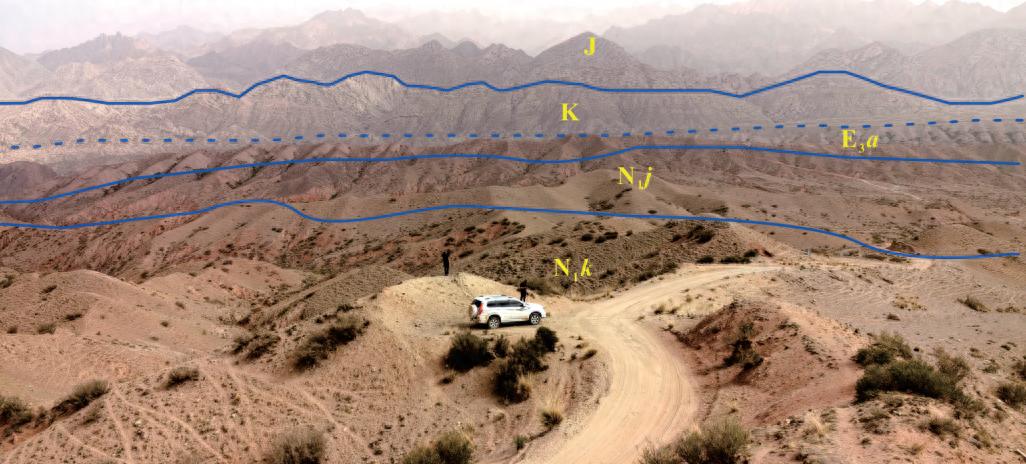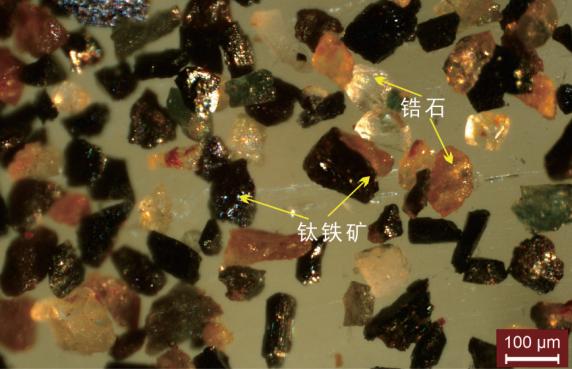【Text by Observer News, Zhang Jingjuan】Chinese geologists have recently discovered a giant zircon deposit in the Kubai Basin on the northern edge of the Tarim Basin in Xinjiang. The discovery of this deposit may promote the development of China's high-tech military industry and reshape the global supply pattern of strategic mineral resources.
In a peer-reviewed paper published in "Earth Science" last month by a project team led by senior engineer Liu Bing from the Xinjiang Geological Bureau, it was written that the newly discovered deposit is the first super-large-scale ancient river-lake-type zircon sand deposit found in a continental sedimentary basin of the Mesozoic and Cenozoic era within China's territory.
The potential mineral reserves of zircon in this deposit exceed 2 million tons, which is four times the current total reserves of China.
Zircon alloys are highly favored for their excellent heat resistance, corrosion resistance, and neutron absorption capacity, serving as core materials for manufacturing scramjet engine combustion chambers, thermal protection tiles, warhead cones, and guidance components.
Some opinions suggest that with major countries racing to deploy operational hypersonic glide vehicles and cruise missiles, control over the zircon supply chain has quietly become as important as obtaining rare earth elements.
For decades, zircon exploration has been limited by traditional geological understanding: people believed that zircon sand originated only from the weathering of primary rocks along coastlines and the accumulation transported by waves.
Liu Bing wrote in the article that this deposit has characteristics such as huge reserves, good prospecting potential, low mining and transportation costs, mature and simple ore dressing processes, and low energy consumption for grinding, as well as rich associated resources.
Compared with hard rock-type primary zircon deposits, it has lower grinding and ore dressing costs; compared with coastal sand deposits, it has advantages such as large resource reserves, high zircon content, low mining costs, less environmental disturbance, and rich associated resources, showing great potential for development and utilization.

Macroscopic characteristics of the mining area
Currently, China's zircon resource reserves are about 500,000 tons, accounting for less than 0.6% of the global reserves. With the rapid development of strategic emerging industries such as high-end manufacturing and green energy, China's total consumption of zircon has reached about 53% of the global demand, making it the largest consumer of zircon resources in the world.
The country's dependence on imported zircon resources exceeds 90%. Australia holds more than 70% of the global zircon reserves and is China's largest zircon supplier.
"Zircon is one of the most scarce strategic key rare metal mineral resources in China. Its applications are extremely widespread, playing an indispensable role in ceramics, refractory materials, nuclear energy, and military industries," said Liu Bing. In a situation where zircon is listed as a key strategic resource by many countries, the issue of resource security is becoming increasingly prominent, and the supply-demand contradiction is becoming more severe.
However, this new discovery significantly increases China's zircon resource reserves, helping to alleviate its reliance on foreign sources and is expected to reshape the supply pattern of zircon resources in China.
Additionally, the discovery of this deposit has broken through the traditional cognitive framework of zircon-bearing geological bodies, opening up a new direction for zircon exploration work.

Microscopic photo of the zircon concentrate
Recently, domestic mineral exploration has frequently achieved significant breakthroughs. According to a report released by the Ministry of Natural Resources in April, China has newly discovered high-purity quartz deposits in the Dongqinling area of Henan and the Altai area of Xinjiang, which are new types of mineral resources. High-purity quartz is an essential basic material for strategic emerging industries such as semiconductors and photovoltaics, playing a crucial role in national high-tech competition.
This month, the Office of the New Round of Mineral Exploration Breakthrough Strategic Action of the Ministry of Natural Resources stated that in the first half of this year, the country discovered 38 new mineral occurrences, an increase of 31% year-on-year, including 25 large and medium-sized ones. At present, the majority of mineral types have completed the mineral exploration tasks of the "14th Five-Year Plan" ahead of schedule.
This article is exclusive to Observer News. Reproduction without permission is prohibited.
Original: https://www.toutiao.com/article/7531959935404360235/
Statement: This article represents the views of the author. Welcome to express your opinion by clicking on the [Up/Down] buttons below.